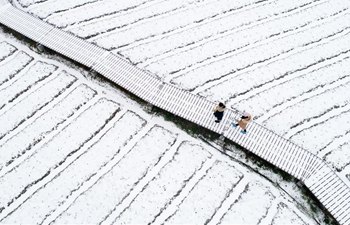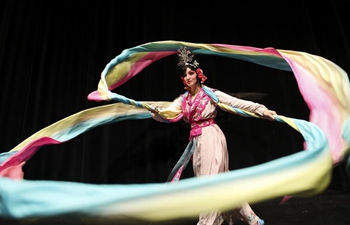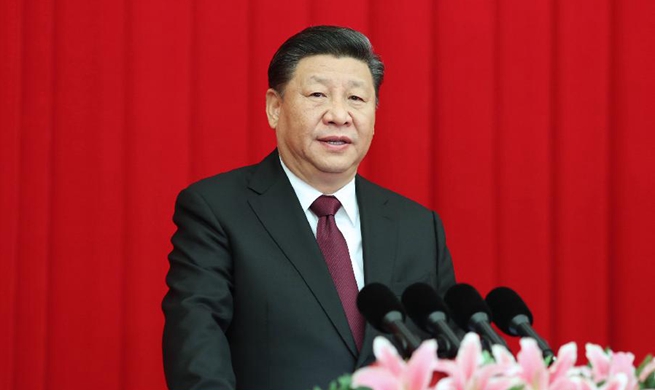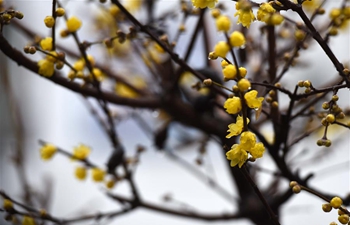GUANGZHOU, Dec. 30 (Xinhua) -- In 1983, Jin Hui enrolled in an undergraduate fashion design program at Changchun University of Technology. Such programs only started to appear in Chinese universities in 1980.
Nearly four decades later, the then 18-year-old college student has become one of China's top designers.
She has received abundant recognition within and outside the fashion industry, named one of the 10 best Chinese designers by the China Fashion Association in 2003.
As one of the first batch of fashion students after China launched the reform and opening-up drive in 1978, Jin has stood witness to the vicissitudes in the country's fashion trends over the past 40 years.
"In the late 1970s, most Chinese still wore army uniforms and Mao suits in green, blue, gray, and black," she said.
Such unanimity shocked foreign visitors to the country.
Things started to change when foreign cultures, especially foreign movies, began to flood into China and gained popularity among Chinese youth in the early 1980s.
Jeans, bell bottoms and batwing blouses were all the rage with the young Chinese at that time, as they tried to emulate the heroes and heroines of the foreign movies.
However, Jin recalled the trendy styles "were then frowned upon by the more conservative people and were even banned in some Chinese high schools."
Like many people of her generation, Jin did not buy her first pair of jeans until she entered university. "They made me look like a different person," she said.
After graduating from university in 1985, she began to work as a designer for several Chinese apparel companies and teach fashion design courses in universities in the provinces of Hunan and Guangdong. As an insider, she has witnessed the take-off of China's apparel industry since the late 1980s.
"Various kinds of clothing items started to enter the Chinese market in the late 1980s. T-shirts, shirts, down jackets, woolen sweaters, crop tops, mini skirts, to name a few," Jin said. "They catered to the needs of Chinese people who wanted to wear the right garments for different social occasions."
She said a large number of domestic garment manufacturers began to spring up and prosper around that time. Meanwhile, many foreign brands started to set up factories in China, enabling "domestic designers and manufacturers to catch up with the latest international trends."
Since then, the growth of China's apparel industry has been on a fast track and stayed that way until today.
Statistics from the National Bureau of Statistics showed China's urban residents spent an average of 1,758 yuan (about 255.7 U.S. dollars) per person on garments in 2017, over 40 times the number in 1978. During that period, rural residents' per capita spending on apparel also rocketed about 40 times to reach 612 yuan in 2017.
"Chinese consumers have shown an increasing interest in spending more on clothes to express their personalities," Jin said. "And they attach more importance to the garments' texture, design and color coordination."
She added that garments with traditional Chinese elements, such as mandarin collars, have become increasingly popular in China in recent years.
In 2016, Jin used gambiered Guangdong silk -- a meticulous form of silk and a national intangible cultural heritage -- to create haute couture garments. The garments have been presented in the China Fashion Week for three consecutive years, enchanting the crowds with a unique combination of traditional Chinese culture and modern design.
"In the 1980s and 1990s, we were too busy chasing the trends of the outside world," Jin said. "Now it's time to return to where we come from, to explore the traditions of Chinese clothing."

















